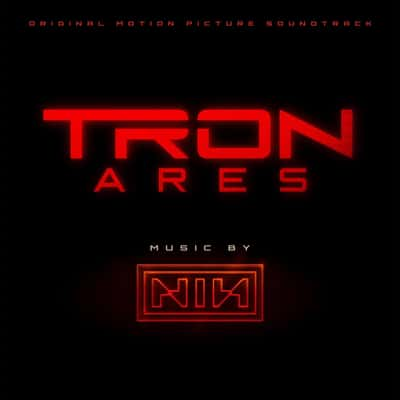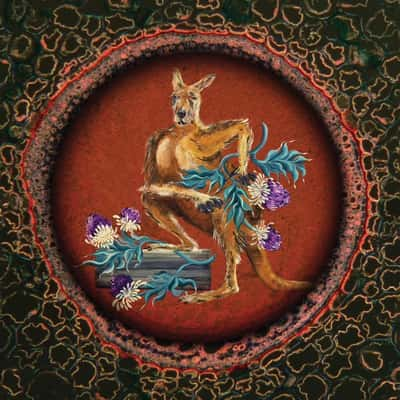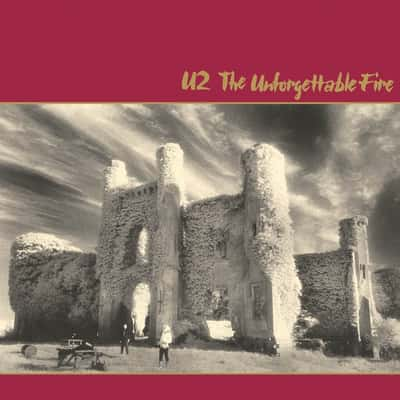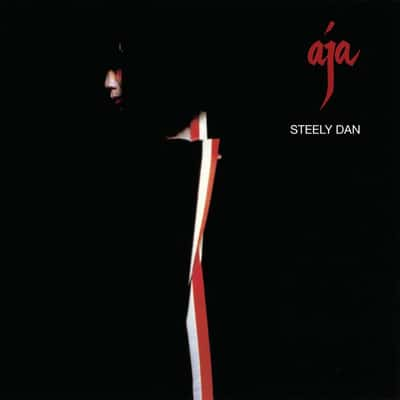
Steely Dan Aja to TRON Ares soundtrack Nine Inch Nails U2 Cardiacs LSD
TRON: Ares (Original Motion Picture Soundtrack) by Nine Inch Nails ⚡️
Neon Blood, Steel Nerves 🧬
Nine Inch Nails scoring a TRON chapter feels like destiny: the digital cathedral of TRON meets the industrial cathedral of NIN. Trent Reznor and Atticus Ross bring a palette founded on voltage and vulnerability—serrated synths, machine-heart rhythms, and harmonies that bloom like cold light over metal. Where Daft Punk made Legacy’s Grid feel sleek and ceremonial, NIN’s Ares suggests circuitry with scar tissue: more pressure, more pulse, more human glitch inside the machine.
From Factory Floor to The Grid 🏭➡️🕹️
Reznor and Ross have long treated electronics like physical objects—hammered, sanded, overdriven until they sing. Expect modular synths clocked to unstable pulses, analog grit threaded through digital precision, and orchestral cells that fracture into distortion. Their trick isn’t volume—it’s gravity. Notes feel heavy. Drums feel consequential. In a TRON world defined by planes and vectors, they’re the duo most likely to carve depth—sub-bass like an undercity, treble like fluorescent rain.
Ghosts in the Machine: A NIN Continuum 👻
Fans will hear echoes across the NIN universe:
- The textural haunt of “Ghosts I–IV” in ambient Gridscapes 🌫️
- The mechanized momentum of The Downward Spiral and Year Zero recontextualized as chase-engine music 🚨
- The emotional architecture of their film work (The Social Network, Gone Girl, Watchmen) powering character motifs—melodies that feel remembered rather than introduced 🧩
It’s the same language, new grammar: a score that can turn from chrome-hard minimalism to aching, vapor-lit elegy in a few measures.
Voltage Lore: TRON’s Soundlineage 🔌
TRON earns its reputation through sound as much as spectacle:
- Wendy Carlos’s 1982 original fused Moog synthesis with orchestra—a radical handshake of analog future and classical past.
- Daft Punk’s Legacy built a neon cathedral with Joseph Trapanese—string sections as data waves, arpeggios as infrastructure.
NIN’s Ares extends that lineage by foregrounding texture and negative space. Instead of romantic gleam, think tensile atmosphere: less “neon heroism,” more “electrical willpower.” It nods to Carlos’s experimental daring and Daft Punk’s symphonic architecture while shifting the center of gravity toward tension, decay, and resolve.
Instruments That Breathe Ozone 🔧⚡
Expect:
- Modular synth clusters drifting in and out of phase, like packets on a congested network
- Prepared pianos pinging like proximity sensors
- Distorted bass that folds into orchestral low brass for unified impact
- Drum programming that flirts with failure—swing and drag used as dramatic oxygen
- Re-amped strings: recorded clean, then driven through guitar amps and pedals, where harmonics bloom like neon fog
It’s the alchemy NIN excels at: turning studio process into story.
Ares as Archetype: Myth in a Silicon Mirror 🛡️
TRON has always been mythology rendered in polygons. NIN’s music respects the archetype but scrapes it raw—hero themes arriving as fragile signals, then hardening under conflict; antagonist motifs not as villainy, but as system logic. The emotional map feels modern: protagonists wrestling with identity and agency inside architectures designed to optimize them away.
Fan Frequencies and Cultural Feedback 📡
NIN devotees tend to meet new chapters like coders reading diff logs—looking for subtle edits in the engine. The TRON fandom, meanwhile, has always prized design and sound as inseparable. Ares stands poised to bridge those cultures: audiophiles chasing texture, synth-heads parsing signal chains, cinephiles tracking motif evolution. Expect cue titles that become lore, live remixes that rewire themes, and a long tail of producers sampling the score’s percussive ghosts.
Legacy Upload: Why This Matters Now ♻️
We live in an age of persuasive interfaces and algorithmic mood lighting. NIN’s TRON music doesn’t just decorate that reality—it interrogates it. The score’s core tension—human fragility rendered through implacable systems—feels like a mirror we can’t dim. If Legacy gave the Grid a cathedral, Ares gives it a conscience. And in the hum between notes, you can hear a question buzzing: who is writing the score—the user, the system, or the noise in between?
LSD by Cardiacs 🧪✨
“At Last! A New Thing” — The Long Pause and Sudden Bloom ⏳🌸
There’s a peculiar poetry to the fact that Cardiacs’ final studio album, LSD, began life as a 2008 release and landed, phoenix-like, in 2025. The sessions were halted after Tim Smith’s devastating illness in 2008, turning the record into a whispered myth among fans. When the band announced its completion years later—with the ghostly, glorious Vermin Mangle leading the reveal—it felt like time folding in on itself: an art-rock time capsule cracked open for a world finally ready to hear it.
Studio as Lab, Band as Chemists 🔬🎚️
Cardiacs always treated the studio like a mischievous laboratory, and LSD reportedly bears their classic signatures: vertiginous time shifts, choirs of voices that sound both childlike and apocalyptic, and guitars that sprint and tumble with gleeful precision. The mixing process—paused for over a decade—became a kind of curatorial act, piecing together Tim Smith’s maximal, kaleidoscopic vision with forensic care. The result is neither archival dust-off nor nostalgia exercise; it’s a living document of ideas that refused to die.
Tim Smith’s Last Puzzle Box 🧩🕯️
LSD reads like a final message from the band’s architect. Song titles such as Vermin Mangle and the rumored Cardiacs Is Instant Death carry that familiar Smith blend of menace and nursery rhyme, of absurdity brushing up against revelation. The music embodies his lifelong trick: taking the grotesque and the divine and binding them together with melodies that feel like they’ve always existed. It’s not merely “unreleased material”—it’s the closing chapter of a singular imagination.
The Cardiacs Constellation: Influence Out of Sight, Everywhere ⭐🌊
You can draw a bright line from Cardiacs to a raft of art-damaged disciples: math-rock bands who learned to dance on odd meters, avant-pop dreamers who treat harmony like a hall of mirrors, and modern prog acts unafraid of clownishness and catharsis in the same breath. LSD’s arrival reframes that lineage—suddenly a whole generation’s “secret influence” has a late masterpiece to point to. The record lands in a landscape shaped by their shadow, proving how far those seeds scattered.
Myths, Memes, and Devotion: The Fan Culture 📜❤️
Few bands inspire a cult like Cardiacs. Bootleg tapes, forum folklore, hand-drawn setlists, and the gentle insistence that this band can change your life—these kept the flame alive through silence. LSD’s tracklist emerged piece by piece, unofficially then officially, turning the community into archivists and celebrants. Hearing new Cardiacs in 2025 isn’t mere consumption; it’s a ritual completed. Many fans will tell you this is grief transfigured into song.
Sound of 2025, Heart of 1980-Now 🧠⚡
Though born in another era, LSD speaks fluently to today’s hybrid listening culture. Hyperpop’s crushed-sugar intensity, math rock’s jittery latticework, even video-game maximalism—all echo Cardiacs’ old provocations. Yet the band’s emotional clarity cuts through the swirl. Beneath the tongue-twister rhythms and carnival lights lives a plain, human ache. That paradox—baroque complexity girding simple feeling—is the album’s most modern quality.
Why It Matters Now 🌍🔥
LSD isn’t just the last word from Cardiacs; it’s a statement about unfinished art finding its time. In an age that can’t stop archiving itself, this record refuses to be a museum piece. It breathes. It startles. It laughs at you and with you. And when the final cadences ring out, you’re left with the sense that Tim Smith’s imagination—so strange, so generous—has completed its orbit and left a bright trace across the sky.
Epilogue: The Smile After the Storm 🌈🌀
Cardiacs taught us that ugliness can be beautiful if you love it hard enough. LSD arrives like a mischievous wink from the beyond, a last puzzle solved and handed back with confetti still falling. For newcomers, it’s a door flung open; for lifers, a promise kept. Either way, it feels like the band saying, one final time: “Come in. The circus is in tune.”
Mantra by Shelter 🕉️⚡
Krishna-core Meets the Mainstream 🚪🎶
In 1995, Shelter slipped a mantra into the mosh pit. Mantra arrived via Roadrunner Records at the height of post-Nirvana alternative fever, but instead of selling angst, it sold uplift. Frontman Ray Cappo (Raghunath) and guitarist Porcell—hardcore lifers from Youth of Today—refined Krishna-core’s raw urgency into melody-driven, radio-tunable punk. “Here We Go” and “Message of the Bhagavat” felt like temple bells ringing over distortion: catchy, cleanly produced, and spiritually direct, without losing the scene’s stomp.
Recording with Purpose 🎛️📿
Mantra marked a decisive sonic shift. Earlier Shelter records were ferocious, basement-born missives; here the production is crisp, vocals are layered, guitars chime and charge, and hooks are foregrounded. This wasn’t a sellout—more like a sermon with better acoustics. The clarity let their lyrical mission shine: verse after verse translating Vedic ideas into hardcore cadences. Tracks like “Civilized Man” and “Not Just a Package” argue for simplicity and self-knowledge with pop-punk immediacy, making philosophy feel like a chorus you could shout with friends.
“Here We Go”: A Lotus in the Pit 🌸🏁
The breakout moment was “Here We Go,” whose video slipped onto MTV rotation—an improbable sight in an era dominated by sludge and irony. The song’s sprint-tempo optimism landed as a counter-anthem: instead of nihilism, a call to service and inner clarity. For many, Mantra was a gateway to both Shelter and the Bhagavad-gītā, the way Bad Brains once wed Rastafarian spirit to DC powerchords. The single proved you could stage-dive into transcendence.
Culture Clash, Harmony Found 🌍🧠
Mid-’90s hardcore was torn between metallic heaviness and pop-punk gloss. Mantra found a third way—spiritual hardcore with sing-along choruses. Its lyrics turned temple conversations into pit talk, normalizing Sanskrit terms in zines and record shops. It wasn’t without friction: purists questioned the polish, while newcomers embraced the positivity. Yet the album opened doors for spiritually inclined punk and later emo-core acts to explore earnestness without irony. You can trace its DNA in bands who fused personal growth with velocity and melody.
Lesser-Known Threads 🧵✨
- European reception was particularly warm; touring behind Mantra saw Shelter treated less as oddities and more as standard-bearers for a hopeful hardcore aesthetic.
- The tracklist order is a subtle narrative arc—from message to application—mirroring Vedic teaching structure: declare truth, test it, live it.
- Roadrunner, better known for metal, gave Shelter a platform that widened their audience beyond the DIY circuit—an unusual label-artist synergy that helped spiritual punk touch the mainstream.
Legacy and Afterglow 🔥🏆
Mantra paved the way for Beyond Planet Earth (1997) and cemented Shelter as ambassadors of Krishna-core. The album’s pop clarity didn’t erase their roots—it amplified them. Today, it reads like a bright line in ’90s punk history: proof that speed and sincerity can co-exist, that a chorus can be both catchy and contemplative. Fans still return to Mantra when they want their heart lifted and their head set straight—proof that sometimes the heaviest thing in the room is conviction.
The Unforgettable Fire by U2 🔥
Castles, Fog, and Uncertainty: The Recording Odyssey 🏰🌫️
U2 traded clenched-fist post‑punk for something dreamier and more cinematic in 1984, decamping to Slane Castle and finishing at Windmill Lane in Dublin. Working with Brian Eno and Daniel Lanois, they embraced ambience, accidents, and atmosphere over punchy certainties. Eno famously discouraged clutter (especially cymbals) and prized spontaneity: “4th of July” emerged from a late-night bass-and-guitar drift he quietly recorded while the band were just noodling. The sessions leaned into echo, room tone, and the castle’s gothic resonance—sound as architecture. It was a risky left turn after War, but it unlocked a widescreen version of U2 that would define the rest of the decade.
A Title Born From Aftermath 🎴
The album’s name came from “The Unforgettable Fire,” a 1982 Peace Museum (Chicago) exhibition of hibakusha art created by survivors of the Hiroshima and Nagasaki bombings. Rather than a literal protest record, U2 channeled that weight into mood: blurred edges, half-remembered images, and a spiritual ache. Even the sequencing feels like walking through rooms of memory—some lit by hope, others by embers.
Sound Paintings, Not Protest Songs 🎨
Listen to the opener, “A Sort of Homecoming,” where Larry Mullen Jr.’s rolling drums and The Edge’s chiming loops create a horizon that seems to move as you approach. “Wire” fuses angular guitar with polyrhythmic tension—still punk in pulse, but refracted through Eno’s vapor. “Elvis Presley and America” is Bono in free fall, improvising stream-of-consciousness lyrics over a slowed-down backing—less a song than a séance with American myth. The band wasn’t just writing tracks; they were attempting atmosphere-as-meaning.
Pride and Paradox ✊🏽✨
“Pride (In the Name of Love)” delivered U2’s first transatlantic hit—an anthem honoring Dr. Martin Luther King Jr. The line “Early morning, April 4” became a miniature controversy (King was assassinated in the early evening); Bono has often corrected it live to “early evening.” The imperfection is oddly fitting: The Unforgettable Fire is an album about reaching beyond certainty. Meanwhile, “Bad”—widely read as addressing heroin addiction ravaging Dublin—grew from the studio into a legendary live ritual, especially at Live Aid in 1985, when Bono’s prolonged, crowd-embracing version elevated U2 from earnest hopefuls to global headliners.
The Image That Sparked a Lawsuit 📸🏚️
Anton Corbijn’s cover photo of Moydrum Castle—majestic, haunted, and partially ruined—perfectly mirrored the album’s half-lit romance. It also echoed an earlier published image so closely that it prompted a legal dispute, a reminder that U2’s new aesthetic was conversing with history, sometimes too directly. Still, the visual language—mist, stone, and silhouettes—became inseparable from the record’s sonic mist.
Studio Alchemy: Small Tricks, Big Echoes 🧪🎚️
- Eno and Lanois treated the studio like an instrument: capturing off-the-cuff moments (“4th of July”), encouraging minimal lyrics, and privileging tone over riffs.
- The Edge leaned into sustained textures and delay-as-composition, turning guitar into a choir of harmonics rather than a single voice.
- Reverb wasn’t just decoration—it was narrative. The rooms of Slane Castle are in the mix; you can almost hear the air.
Ripples Through the 1980s and Beyond 🌍📡
The Unforgettable Fire became a blueprint for atmospheric rock that reaches stadiums without sacrificing mystery. It helped pave the way for The Joshua Tree’s expansive Americana and influenced later soundscapers—from Coldplay’s early shimmer to post-rock bands that treat ambience as emotional punctuation. It also reframed how big bands could be introspective: grandeur not through volume, but through space.
Why It Still Glows Today 🔭❤️
In an era obsessed with clarity, The Unforgettable Fire remains compelling for its blur. It’s a record of searching rather than arriving—half prayers, half postcards. You feel the castle walls, the fog on the Liffey, the weight of history, and the fragile, flawed human voice reaching for something better. That reach—audacious, imperfect, unforgettable—is the album’s true flame.
Allbarone by Baxter Dury 🥂
Street-Poet Cinema, New Scene 🎬
Baxter Dury’s “Allbarone” isn’t a guitar anthem or a club banger—it’s a suave stroll through a neon suburb, a muttered confession in a velvet booth. Dury’s trademark spoken-sung delivery—half louche raconteur, half wounded romantic—returns here with more swagger than sadness. The title itself (spelled Allbarone in official listings, often heard as “Allbarone”) feels like a toast and a shrug, the kind of wordplay Dury loves: posh bar vibes, shifty undertones, champagne flutes with fingerprints. 🍾
Behind the Velvet Rope: Production Sleight of Hand 🎛️
“Allbarone” glides on a minimalist palette—sleek bass, feathered synth pads, and percussion that hits like polite knocks on a door. Instead of big choruses, it leans on texture and character: tightly edited vocal doubles, conversational ad-libs, and that Dury-specific swing that feels like a late-night taxi weaving through wet streets. The production is clean but sly, the kind of hi-fi that leaves room for wit. Listen for the small details—breathy drop-ins, clipped consonants, a bassline that never raises its voice but always knows the route. 🚖
A Lineage of Louche Pop 🧥
Baxter’s universe belongs to a very British lineage: crooks in nice coats, romance as dry comedy, heartbreak with expensive lighting. You can trace the line from Ian Dury’s street-bard realism to Baxter’s satin nihilism, with nods to Sleaford Mods’ talky cadence and the slick, noirish pop of Metronomy-era collaborators. “Allbarone” sharpens Baxter’s persona into a modern archetype: the narrator who knows the script and edits it in real time.
Lesser-Known Angles 🍸
- The single appeared in 2024, signaling a post-memoir phase after the autobiographical bite of “I Thought I Was Better Than You.” Here, Baxter pivots from family myth to social choreography—how people move, pose, and fail gracefully in public.
- Fans spotted early live teases and platform-specific snippets, building a cult-y anticipation around the track title’s odd spelling—an inside-joke energy that mirrors Baxter’s lyrical wink.
- Community forums and metadata sleuths flagged the track credits swiftly; the arrangement’s restraint points to Dury’s knack for letting groove and character tell the story more than ornament. 🕵️
Character Study: The Narrator at the Bar 🥃
Dury’s characters are never cartoons—they’re too human. In “Allbarone,” the voice feels like a charming liability: someone good at entrances, worse at exits. He speaks in polished shards—status anxiety, small betrayals, posture-as-identity. The humor lands softly, then cuts. That’s the trick: he makes the pose feel like confession, and the confession feel like theater. 🎭
Cultural Resonance, Right Now 📍
In an era of maximal pop, “Allbarone” thrives on negative space. It’s algorithm-proof in the best way—unhurried, conversational, built for headphones and city walks at dusk. The song lines up with a broader UK microtrend: talk-sung vignettes, debt to club minimalism, lyrics that read like overheard texts. It’s also meme-adjacent: quippy enough for captions, moody enough for late-night reels.
From Cult Favorite to Canon Adjacent 🏆
Baxter Dury’s reputation has grown from niche raconteur to a reference point for artists who want narrative pop without the melodrama. “Allbarone” extends that influence: producers and indie stylists crib the pacing, the clipped phrasing, the urbane melancholy. If “Prince of Tears” made him the poet of elegant damage, “Allbarone” makes him the maître d’ of modern ennui—seating us by the window, pointing out the city’s reflections, and letting the scene tell on itself. 🌃
Why It Sticks 💡
- A hook built on attitude, not volume
- Production that’s luxurious without showing off
- Lyrical snapshots that feel like gossip you can dance to
“Allbarone” is Baxter Dury doing what only he can: turning a room, a rumor, and a rhythm into a world you want to revisit—last call after last call, forever almost leaving.
Aja by Steely Dan 🐉
Sleek Obsessions in Studio Light 🎛️
By 1977, Donald Fagen and Walter Becker had retired from the road to chase immaculate sound. Aja became their crystalline obsession: recorded largely at The Village Recorder in West L.A. with producer Gary Katz and engineers Roger Nichols, Elliot Scheiner, and Bill Schnee. Instead of one band, each song is a boutique ensemble—jazz greats and top L.A. session players, tailored like a bespoke suit. The result: jazz-rock that gleams like chrome but moves like smoke.
The Title Track: A Hallway of Mirrors 🎷
Aja, the seven-and-a-half-minute suite, is the album’s inner sanctum. Wayne Shorter’s tenor sax unspools over intricate chords, while Steve Gadd detonates a compositional drum solo—melodic, architectural, unforgettable—practically rewriting the vocabulary for pop drumming. Tom Scott’s arrangements thread the needle between fusion sophistication and radio clarity. It’s a song that feels both like a city at 2 a.m. and a masterclass at noon.
Peg and the Art of Refusal 🎥
Peg sounds effortless—breezy, bright, sly—but its solo spot became a trials-by-fire saga. After multiple guitar titans took a swing, Jay Graydon delivered the razor-cut take that made the record. Behind the gloss lurks a rebellious detail: bassist Chuck Rainey was told not to slap; legend says he turned his back to the control room and did it anyway, the percussive pop now baked into the groove like a grin you can hear. Michael McDonald’s sky-high harmonies add the sunlight.
Deacon Blues: Losers as Laureates 🌙
“If you’ve got a name like Crimson Tide, we’ll be Deacon Blues.” In their universe, the underdog is mythic. Over Bernard “Pretty” Purdie’s unhurried pocket and jazz chords that feel expensive and lonely, the narrator romanticizes failure with poet’s pride. Aja reframed cool not as conquest but as composure—elegant melancholy you could slow-dance to at 3 a.m.
Precision, Not Perfectionism 🧭
Steely Dan’s notorious retakes weren’t sterile—they were narrative. The band used precision to reveal character: Joe Sample’s keys gliding like marble floors; Larry Carlton’s guitar as interior lighting; Victor Feldman’s percussion flickering at the edges. Nichols’ audiophile discipline (and the team’s fastidious mixes) turned AM/FM radio into a high-fidelity gallery. You didn’t need fancy gear to hear the detail; the detail came to you.
Jazz Invited to the Party (And Stayed) 🍸
Aja didn’t just flirt with jazz; it gave jazz musicians pop-cultural center stage. Shorter’s solo on a platinum record, Purdie’s shuffle canonized on “Home at Last,” Tom Scott’s horn charts sculpting air—these weren’t cameos, they were architecture. The album helped normalize harmonic richness and session-player virtuosity in mainstream pop, seeding influence in yacht rock, sophisti-pop, and the later “nu-jazz” sensibility of artists chasing smooth surfaces with complex interiors.
The Los Angeles of the Mind 🌴
Aja is a map of ’70s L.A.: sleek studios, nighttime freeways, anxious glamour. The characters sip Black Cows and plot reinventions; the city becomes a mirror for beautiful discontent. In a decade of big statements, Steely Dan built a private cinema—wry, adult, and oddly intimate—where every chord change is a raised eyebrow.
Echoes and Afterlives 📡
From Daft Punk’s studio exactitude to Thundercat’s jazz-tinged pop, from Jamiroquai’s satin grooves to the session-craft of John Mayer and Vulfpeck, Aja’s DNA travels widely. Audiophiles test speakers with it; drummers study Gadd and Purdie; vocal arrangers trace Michael McDonald’s lines on Peg. It’s the rare blockbuster that also functions as curriculum.
Why It Still Feels New ✨
Because Aja is about control—and the emotions that slip past it. The surfaces are flawless, but the stories ache. That tension—between lush order and messy longing—gives the album its lasting voltage. Put it on today and the rooms still get larger, the nights longer, the details sharper. Some records age; Aja simply deepens.
Top Artists (Week 37)
- Nine Inch Nails (24 plays)
- Cardiacs (17 plays)
- Shelter (11 plays)
- U2 (10 plays)
- Baxter Dury (9 plays)
- Steely Dan (7 plays)











